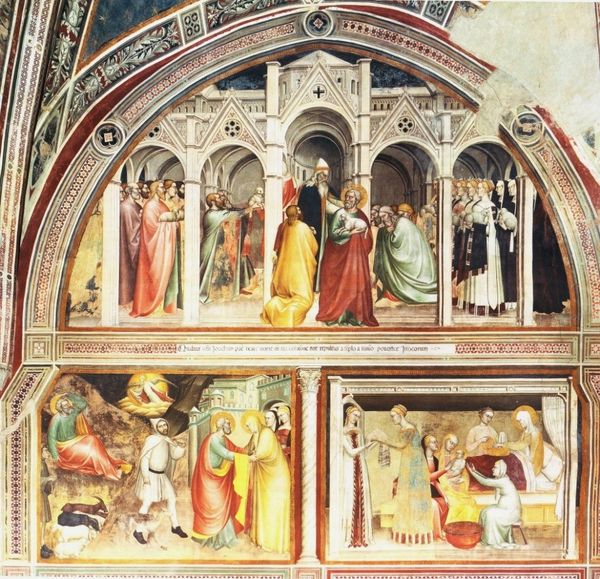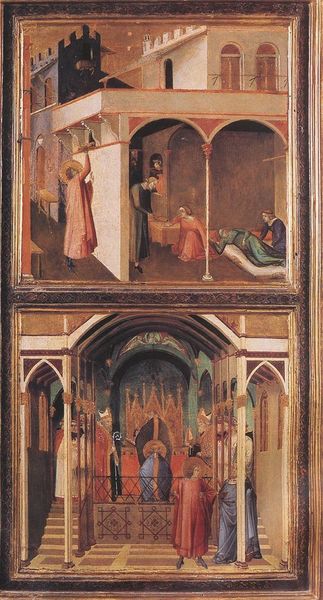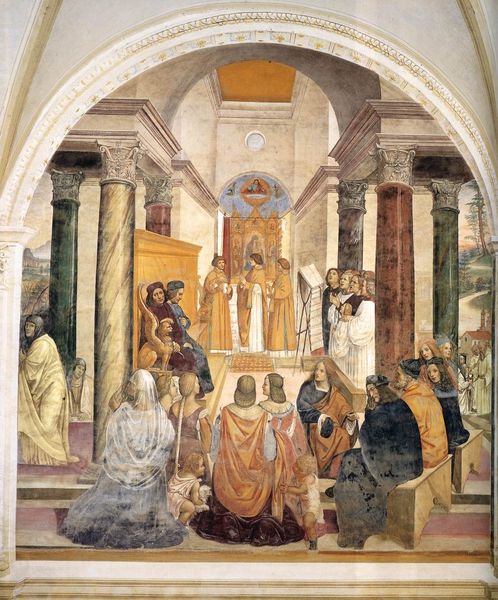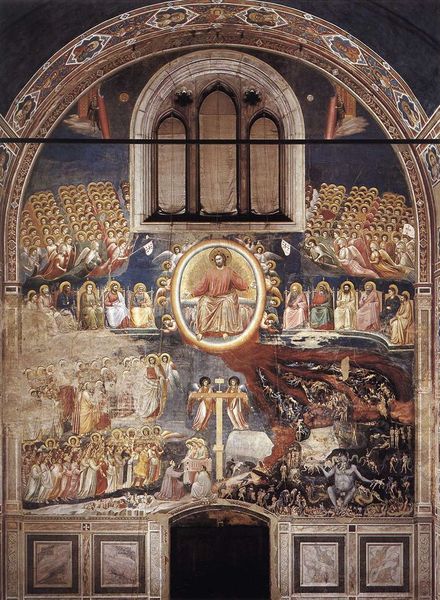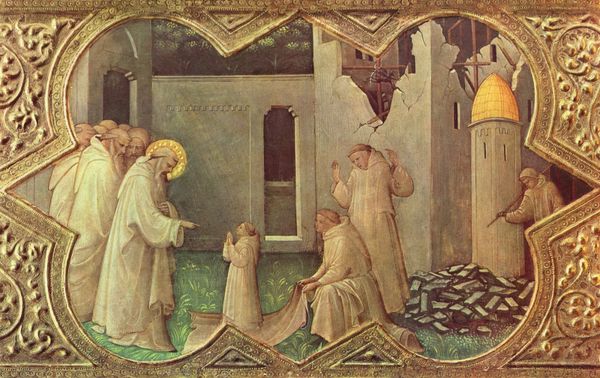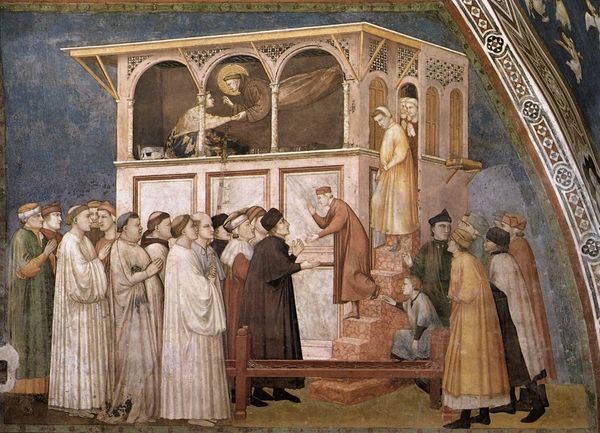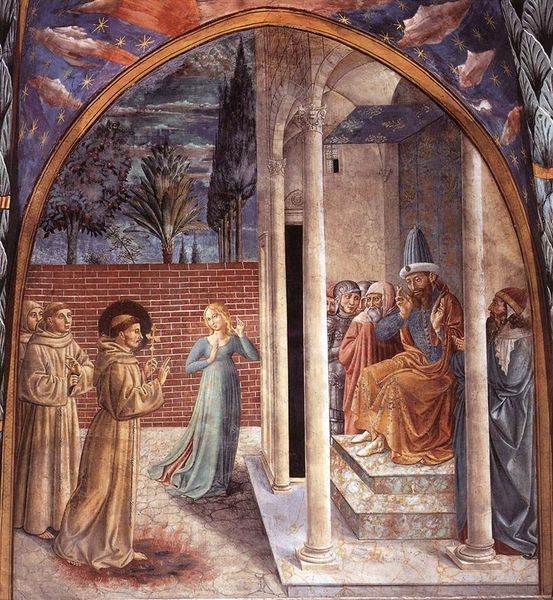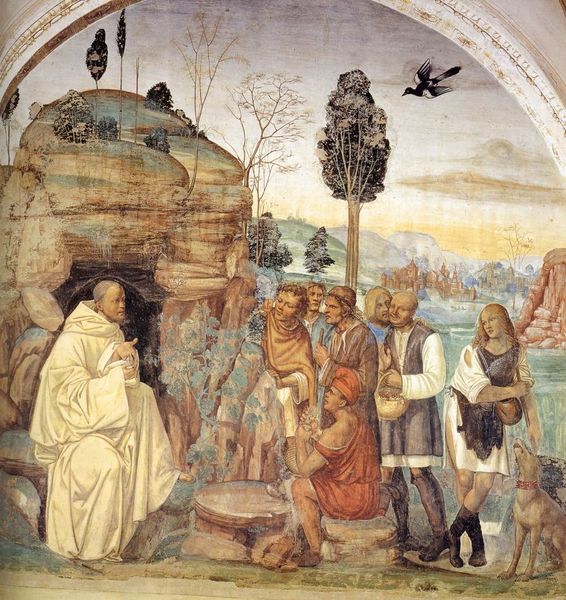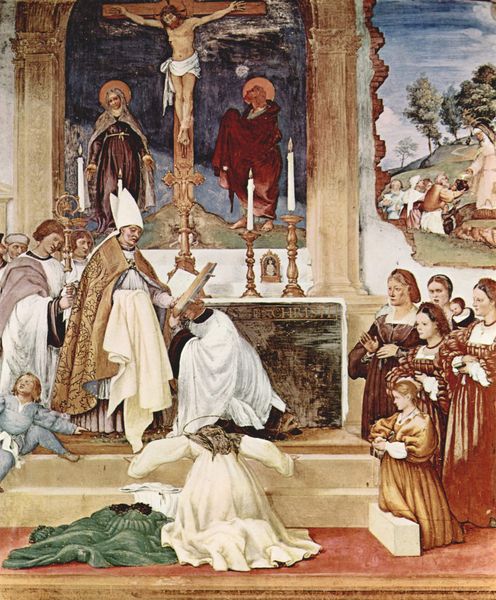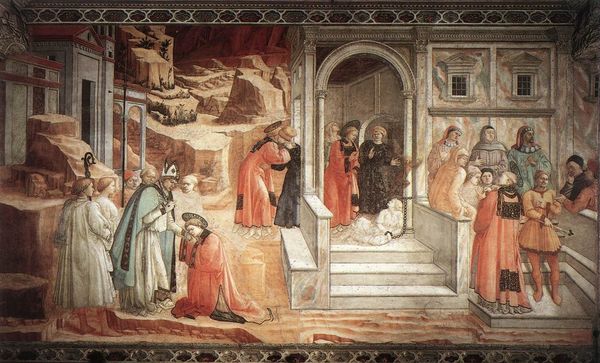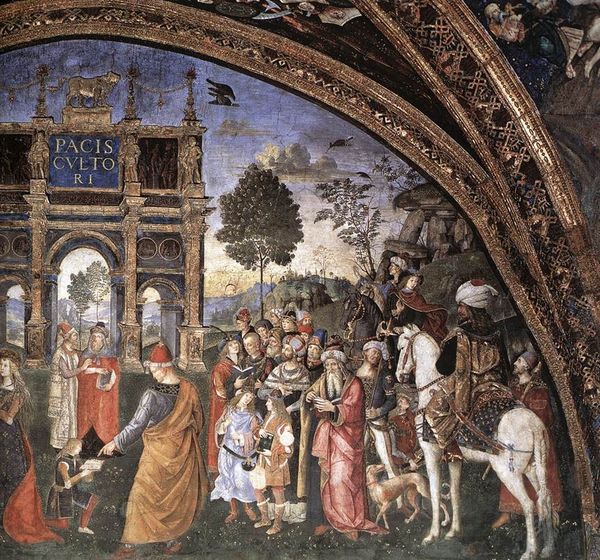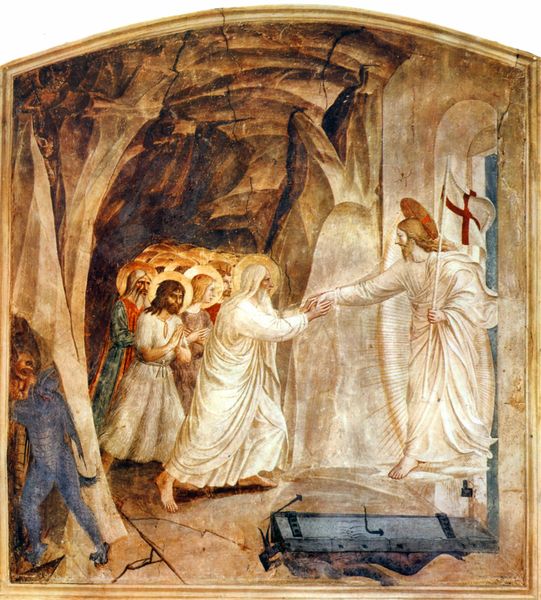
The Seven Deadly Sins and the Four Last Things (detail) 1500
0:00
0:00
hieronymusbosch
Museo del Prado, Madrid, Spain
oil-paint, fresco
#
allegory
#
oil-paint
#
figuration
#
fresco
#
oil painting
#
christianity
#
history-painting
#
early-renaissance
Copyright: Public domain
This detail from Hieronymus Bosch’s “The Seven Deadly Sins and the Four Last Things” reflects the religious and societal anxieties of the late medieval period. Bosch, living in a time of widespread social upheaval, crafted images that were deeply moralizing, often portraying the consequences of sin. In this section, observe the figures being led by a saintly figure away from a demon, towards salvation. The nakedness of these figures can be interpreted as a symbol of vulnerability and honesty. The figures are offered salvation through the church as a means of redemption, while angels play music in the foreground. Above, Christ sits in judgement. Consider the emotional weight of this piece. Bosch is forcing us to confront not only our mortality but also the moral choices that define our lives. It's a powerful commentary on faith, fear, and the human condition. The artist prompts us to consider what truly matters in the face of judgment.
Comments
No comments
Be the first to comment and join the conversation on the ultimate creative platform.
